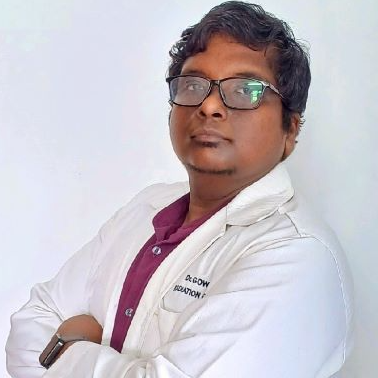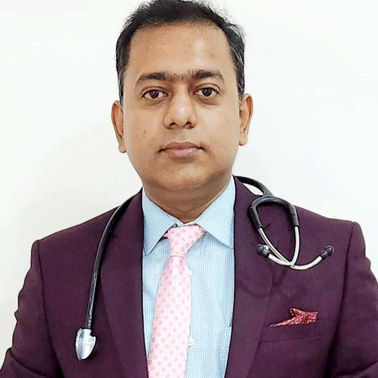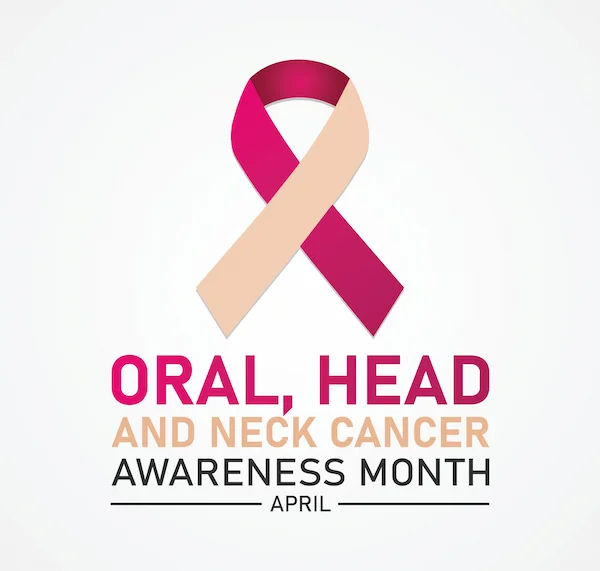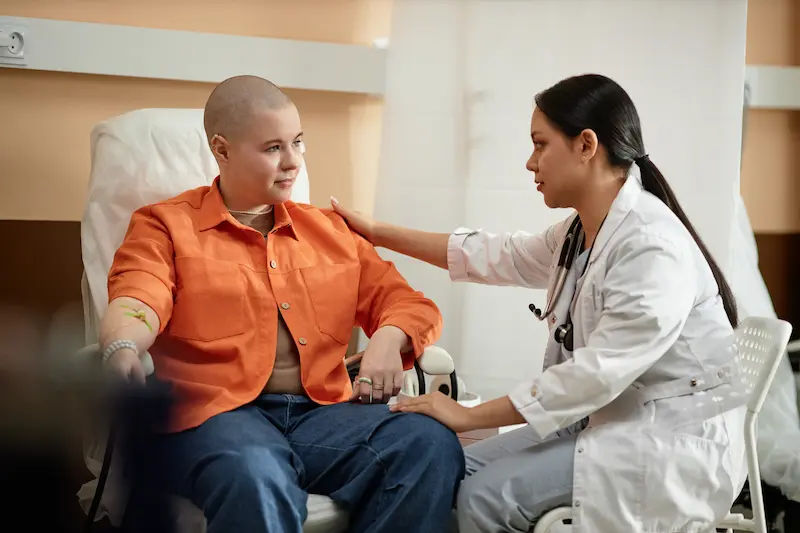Cancer Screening Life-Saving Facts
Discover how cancer screening can save lives by detecting cancer early. Learn about different types of screenings, advancements in technology, and how early detection improves treatment outcomes.

Written by
Last updated on 3rd Jul, 2025
Cancer screening comprises an array of medical tests that help detect cancer in its earliest stages. Research shows that certain screening methods can significantly improve the chances of successful treatment. This can also help cure cancer because of the early detection. It’s essential to understand that a healthcare provider’s recommendation for screening does not indicate a suspicion of cancer. It is a step toward maintaining health and well-being.
This article explores key facts about cancer screening. It will shed light on its importance, types, and how it can be a life-saving tool in cancer prevention and treatment.
Types of Cancer Screenings
There are several types of cancer screening tests. Some of them are:
Breast Cancer Screening: This test helps in detecting breast cancer. Screening mammograms can lower the risk of death from breast cancer for women aged 40 to 74. The most benefit is seen in those aged 50 to 69. Most experts recommend starting breast cancer screening at age 40.
Cervical Cancer Screening: Cervical cancer can be prevented through screening tests like the Pap test and HPV test. These tests help identify abnormal cells early. This allows treatment before cancer develops. Experts generally suggest starting cervical cancer screening at age 21 and stopping at age 65.
Colorectal Cancer Screening: Some tests like colonoscopy, sigmoidoscopy, and stool tests can detect colorectal cancer early and lower the risk of death. In addition, other tests also identify abnormal growths. This can help remove growths early before they turn cancerous. Experts recommend regular screening for people aged 45 to 75 who are at average risk.
Prostate Cancer Screening (PSA Test): The PSA blood test is used to detect prostate cancer. While it may slightly reduce deaths from prostate cancer, experts advise against routine PSA testing for men at average risk due to potential risks, including overdiagnosis and false positives.
How Cancer Screening Saves Lives?
Cancer screening saves lives by finding cancer early. These tests improve survival rates, make treatments a bit easier and help reduce healthcare costs. Here’s how cancer screening can help save lives.
Some screenings catch early changes, like abnormal cells, that can be treated before they turn into cancer.
Screening can find cancer before it grows or spreads, increasing the chances of effective treatment.
Cancers detected early are more likely to respond well to treatments like surgery or radiation
Less aggressive treatments mean fewer side effects and a better overall quality of life.
Early detection often leads to lower treatment costs compared to advanced-stage cancer care.
Screening Guidelines and Recommendations
Screening helps detect cancer early and is based on general health, age, and risk factors.
1. Age-specific guidelines
Screenings are recommended at specific ages when the risk of developing certain cancers increases.
Younger adults (20s–30s): Cervical cancer screening (Pap tests) starts.
Middle age (40s–50s): Mammograms begin for breast cancer; colorectal cancer screenings typically start around age 45.
Older adults (60s+): Continued screenings depend on prior results and overall health.
2. High-risk population guidelines
People with a higher risk of cancer, such as those with a family history, genetic conditions, or lifestyle factors, may need earlier or more frequent screenings. For example:
Individuals with a strong family history of breast or colorectal cancer may need screening in their 20s or 30s.
Heavy smokers are often screened earlier for lung cancer.
3. Frequency of screenings
The timing of tests varies depending on the cancer type and individual risk.
Average-risk individuals may only need screenings every few years (e.g., a mammogram every 1–2 years).
High-risk individuals might require annual or more frequent check-ups.
Common Barriers to Cancer Screening
Several factors can prevent individuals from getting screened for cancer:
Some people may fear the outcome of a screening test or avoid it because they don’t want to know if they have cancer.
Many individuals are unaware of the importance of cancer screening or don’t know how to access these tests.
Screening centres may be far away, and lack of transportation can make it difficult to reach them.
The expense of screening tests can make them unaffordable for some people.
Some may believe that cancer is inevitable or feel that screening isn’t necessary.
Facilities may not be accessible for people with disabilities, or they may lack essential services like translators.
Advancements in Cancer Screening Technologies
Innovations in cancer screening are transforming early detection, making it more accurate, less invasive, and accessible.
Liquid Biopsies: Liquid biopsies are a breakthrough in early cancer detection. This minimally invasive test analyses blood samples to detect cancer markers in the bloodstream, often before traditional imaging methods can identify them.
Multi-Cancer Early Detection (MCED) Tests: Expanding on liquid biopsy technology, MCED tests can screen for multiple types of cancer at once. These tests examine blood samples for specific DNA methylation patterns or protein markers linked to various cancers.
Artificial Intelligence (AI) and Machine Learning: AI and machine learning are revolutionising cancer screening. These technologies analyse medical images, such as mammograms and CT scans, with exceptional accuracy, often detecting abnormalities that may go unnoticed by human experts.
Breath Analysis: Research into breath analysis is exploring its potential as a non-invasive screening method. Certain volatile organic compounds (VOCs) in exhaled breath may act as markers for specific cancers.
Molecular Imaging: Advances in molecular imaging are providing a deeper look into cancer at the cellular level. PET scans combined with specialised radiotracers can highlight cancer cells by targeting their unique metabolic activities or protein presence.
Risks and Limitations of Cancer Screening
Cancer screening has its benefits, but it also comes with risks and limitations that should be considered.
A screening test might suggest cancer when none is present. This can lead to unnecessary follow-up tests or treatments, causing stress and potential harm.
Sometimes, a test might fail to detect cancer even when it exists. This can delay diagnosis and treatment, giving the disease time to progress.
Screening can sometimes detect slow-growing cancers that may never cause harm. Treating these cancers can lead to unnecessary procedures and side effects.
No screening test is perfect. Results are not always 100% reliable, and errors can occur.
Some cancers, especially those that are very small or located in hard-to-reach areas. Such cancers may go undetected during screening.
Importance of Public Awareness and Education
Raising awareness and educating the public about cancer screening is very important. It plays a role in early detection and improving survival rates. Clear communication is essential. When one uses simple language, the message can reach different groups. Visual tools like infographics can make the message more engaging and easier to understand.
Healthcare providers offer personalised advice and recommend screenings based on individual risks. They also address any misconceptions. As trusted educators, they help communities see the value of screenings and create a supportive environment.
By working with local organisations, healthcare providers can expand their reach, encouraging more people to participate in screenings and benefit from early detection.
Future Directions in Cancer Screening
The future of cancer screening focuses on personalised strategies. These tailor tests are based on genetics, lifestyle, and family history. This approach boosts early detection. In addition to this, AI and machine learning are also improving screening accuracy. They help find patterns in large datasets. AI also speeds up image interpretation and reduces errors.
Global partnerships are expanding screening access in underserved areas. These efforts promote healthcare equity. Governments, healthcare groups, and nonprofits are innovating screening technologies and raising awareness worldwide.
Conclusion
Cancer screening is vital for early detection, which can improve survival rates and treatment outcomes. Finding cancer early gives people a better chance at successful treatment and a higher quality of life. While screening has its challenges, like false positives and limited access, new technologies are making it more accurate and easier to access.
Educating the public about screening is crucial to help more people get tested and catch cancer early. As screening continues to improve, personalised approaches, AI, and global efforts will help save even more lives.
Consult Top Oncologist
Consult Top Oncologist

Dr. Gopal Kumar
Head, Neck and Thyroid Cancer Surgeon
15 Years • MBBS, MS , FARHNS ( Seoul, South Korea ), FGOLF ( MSKCC, New York )
Delhi
Apollo Hospitals Indraprastha, Delhi
(25+ Patients)

Dr. Sanchayan Mandal
Medical Oncologist
17 Years • MBBS, DrNB( MEDICAL ONCOLOGY), DNB (RADIOTHERAPY),ECMO. PDCR. ASCO
Kolkata
MCR SUPER SPECIALITY POLY CLINIC & PATHOLOGY, Kolkata

Dr. Rupam Manna
Radiation Specialist Oncologist
4 Years • MBBS MD(RADIO THERAPY)
Barasat
Diab-Eat-Ease, Barasat

Dr Gowshikk Rajkumar
Oncologist
10 Years • MBBS, DMRT, DNB in Radiation oncology
Bengaluru
Apollo Clinic, JP nagar, Bengaluru

Dr. Sanchayan Mandal
Medical Oncologist
17 Years • MBBS, DNB Raditherapy, DrNB Medical Oncology
East Midnapore
VIVEKANANDA SEBA SADAN, East Midnapore


